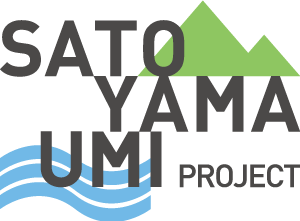
Productive days
〜Multi-stakeholders’ activities for
achieving the success of the project〜

A family of the Sarus Crane came back to BPL
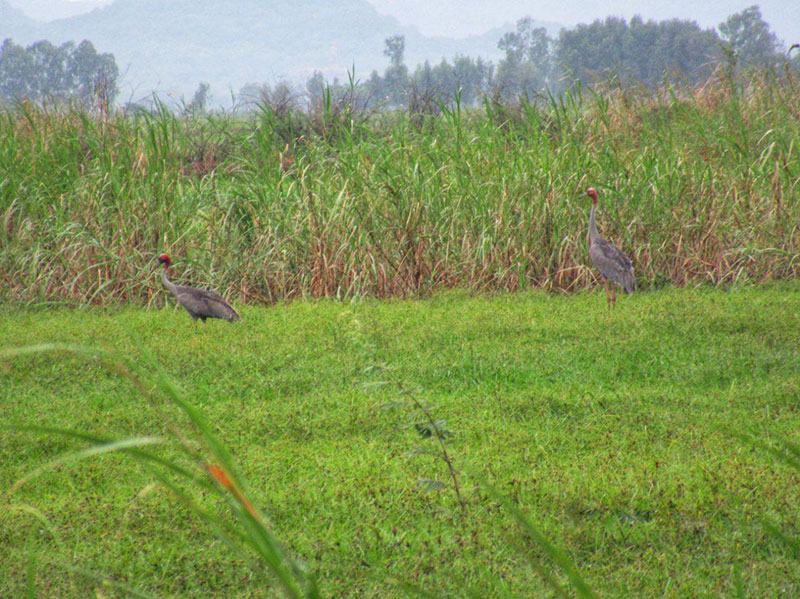
Two Cranes in BPL
In general, the Sarus Cranes move from Boeung Prek Lapouv (BPL) in February to other feeding grounds, or directly fly to nesting site in the Northern part of Cambodia. However, this years a family of the Cranes came back to BPL in early July for few days. Then they had disappeared for a month before came back to BPL again in late August. This is unusual and our field monitoring team needs to conduct detailed monitoring. Based on last census result, the population of Sarus Crane is declining dramatically, habitat loss is believed as one of the main threats to the species. There are still many things we do not know.

Activities by BirdLife Cambodia Programme
Unfortunately, our young staff, Lyan decided to resign and run his personal business at the end of July. In August we recruited Mey Phanny to replace Lyan. Phanny received orientation training and day-to-day supervising from Mr. Bou Vorsak (Cambodia Programme Manager) and work handing over from Lyan. Phanny was trained by BirdLife Vulture project coordinator to organize the International Vulture Awareness Day 2019 event in September.
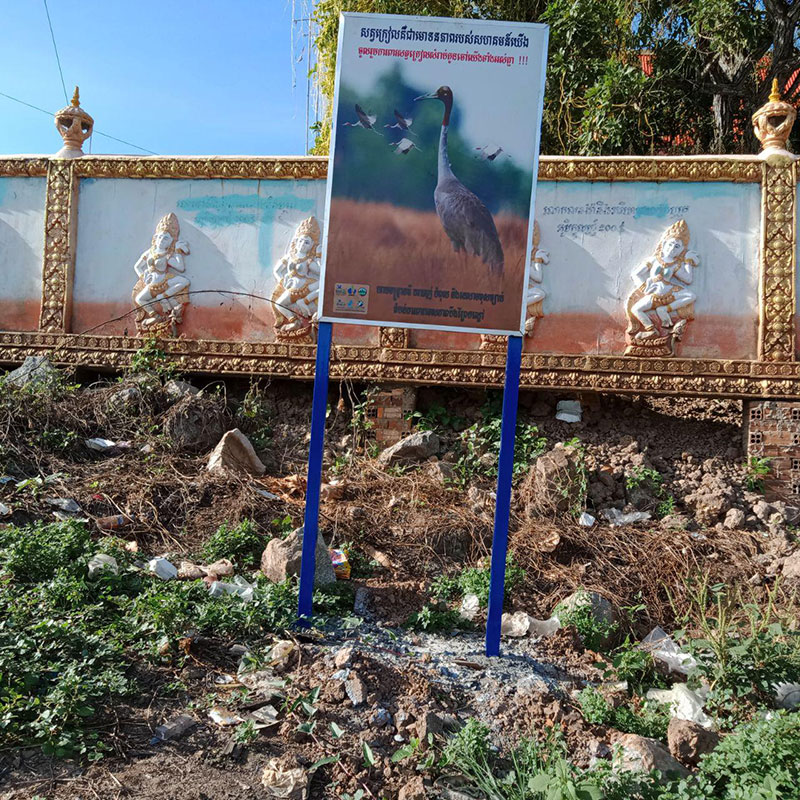
A sign board has been installed in front of pagoda
■Environmental Education Programme
Second year of the environmental education programme has been finished in late June 2019. Feedbacks from each lesson were collected from teachers and entered to data storage system. Four types of Sarus Crane posters (descript about habitat, ecology, life cycle and threats) for environmental education programme were printed and delivered to both schools in BPL. Two sign boards have been installed in front of SongKum Meanchey pagoda and along the canal to Bunteay sleuk village to encourage the local people to cease their illegal land encroachment, hunting, poisoning and fishing in BPL.
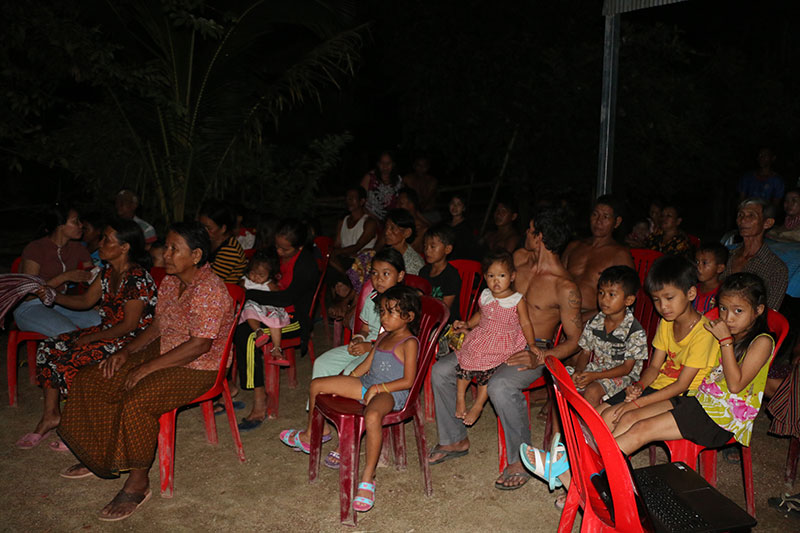
Film show at villages in BPL
■Sarus Crane Film
The village film shows were organized to enhance the support from local communities in biodiversity conservation and sustainable use of ecosystem services. In late September, we organized two education events in Deum Chan and Deum Kroch villages with participation of 76 people, including village chiefs, youth, and kids. Most of them enjoyed the film and willing to answer the questions. During events, village chiefs addressed law and regulation related to protected area and encourage their village members to practise the sustainable use of wetland resources. On 31 July, the film was shown at provincial dissemination workshop on new regulation in crack down natural resources crime on 31 July. This workshop joined by 300 people including students, district governors, arm forces, and senior provincial officers.
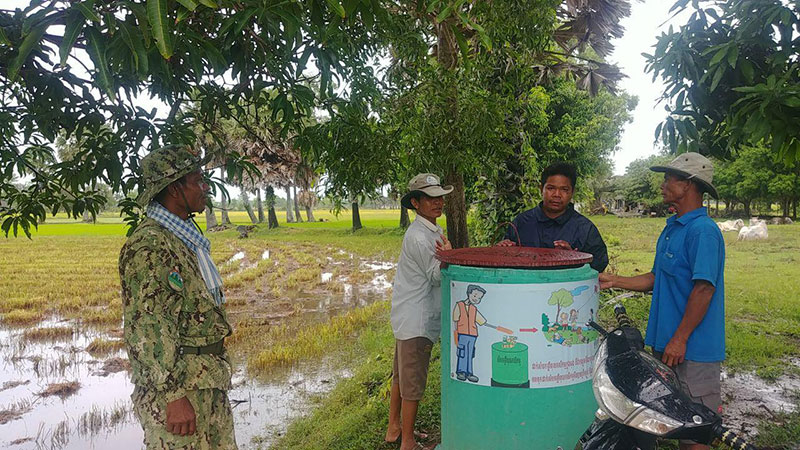
Local community has set agricultural hazardous wastes
storage box in rice fields in AP
■Agriculture Hazardous Waste Management
Following the protocol, we installed and coloured 7 waste storing boxes at strategic areas of Anlung Pring Landscape (AP) to encourage local people to collect their agriculture hazardous wastes and keep in these storage boxes instead of throwing to wetlands. We also developed a voice announcement to encourage local communities on this matter. This announcement was broadcasted at Thmorberk and Dempor pagodas when people gathered for religious ceremony in early September. Two signboards was designed and installed near the commune chief’s house to encourage local people to conduct the adequate waste management.
According to sub degree 36 of Ministry of Environment and the concerning on the safety of the disposal system, we are working with a director of AP to learn the system management from Kompong trach district hospital. Director of the hospital shared his current practise and recommend to replicate this model to the project site. Garbage area of Kampong trach district was identified as right place for building a big storage system. Then, the director of AP submitted an official letter to Kampong trach district governor to request for building the storage system inside the garbage storage area, and we received the positive answer in late September 2019.
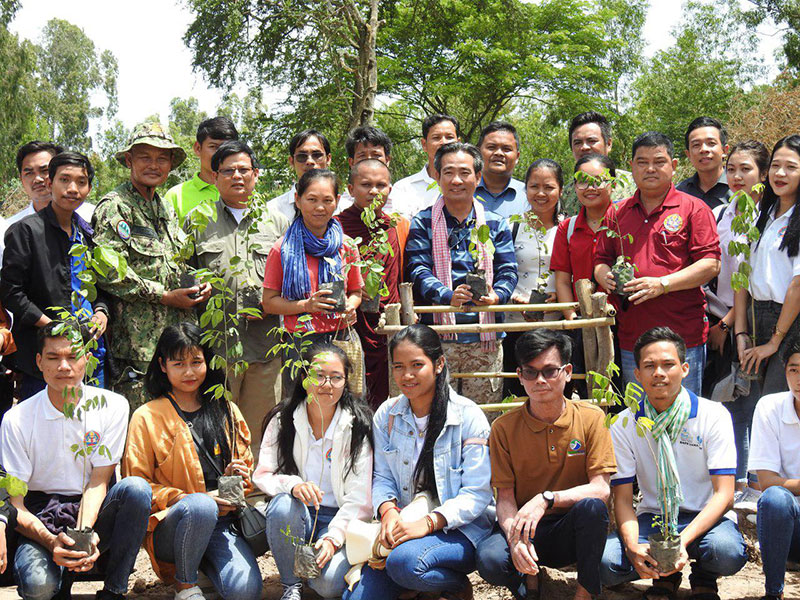
Study tour for university students
■Awareness Raising Events
Urban youth capacity building: Late August 2019, we collaborated with Takeo provincial authorities and other NGOs to organize a study tour for university students from Phnom Penh to BPL. 80 students from National University of Management joined the study tour and the Deputy Governor of Takeo as honorary guest speaker. The objective of this trip was to improve knowledge of university students about importance of wetland and Sarus Crane conservation. 200 trees were also planted at Hun Sen Kok Andeth High School. Students had chance to see a numbers of waterbirds, and understood protected area management, ecosystem services, and key challenge in doing side conservation.
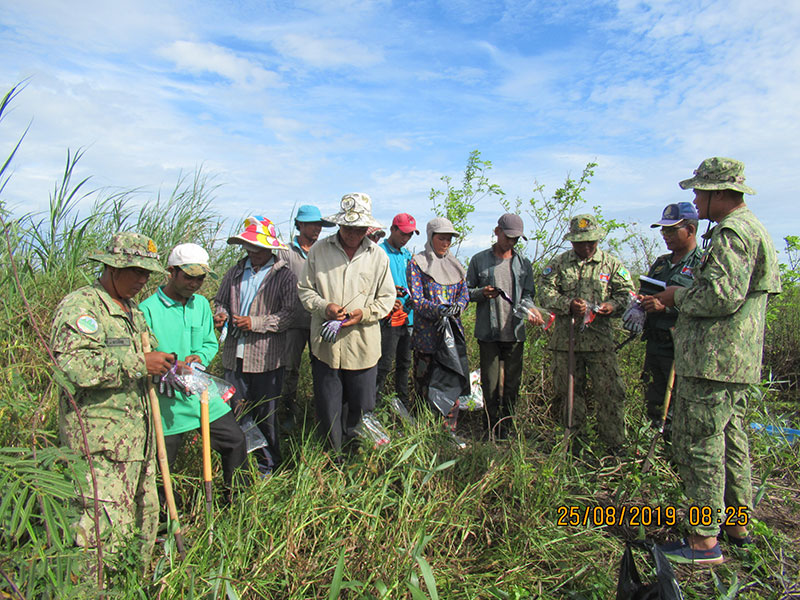
Field training on how to remove giant mimosa pigra
Invasive Species Control: Giant mimosa pigra control activity was organized in August 2019 in BPL. We provided theory and field practice for one university student, six rangers and six local people from Deilerk village. After finishing this activity, all trainees understood the negative impacts of this invasive species and controlling methods. In addition, the university student also has gain working experience with local people, rangers and NGOs staff.
We will produce the second year report of the environment education programme. Organize refreshment training for 8 primary school teachers and develop third years teaching plan for both target primary schools. The film show will be organized at least for 6 villages in BPL and AP. Voice announcement will be continued broadcasting at all target villages in AP, and encourage and monitor the storage boxes until the end of rice planting season. The big waste storage system will be built at garbage area of Kampong trach district. We will also form a local team to transport the wastes from storage boxes to a big waste storage system. Organizing the post flooding giant mimosa pigra control training for multi-stakeholders.

Activities by Mlup Baitong
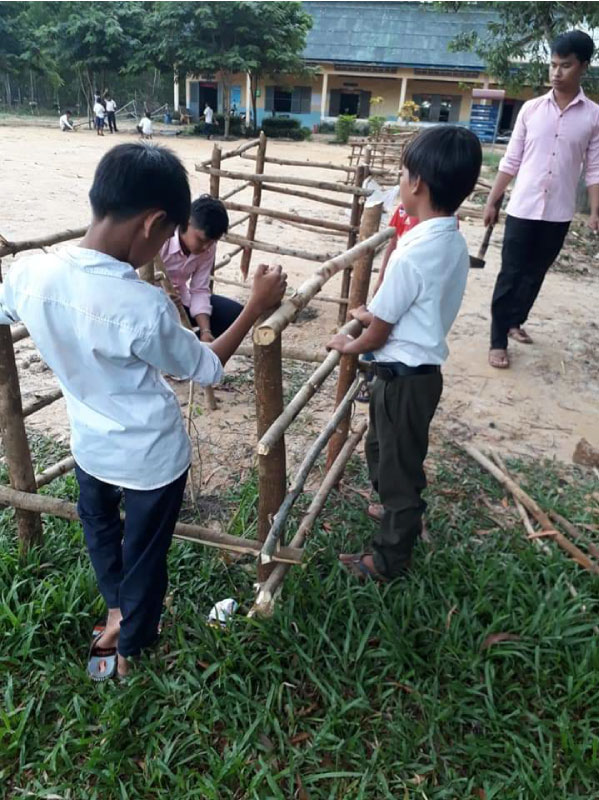
Eco-school activity: Tree planting in Koh tromuong primary school
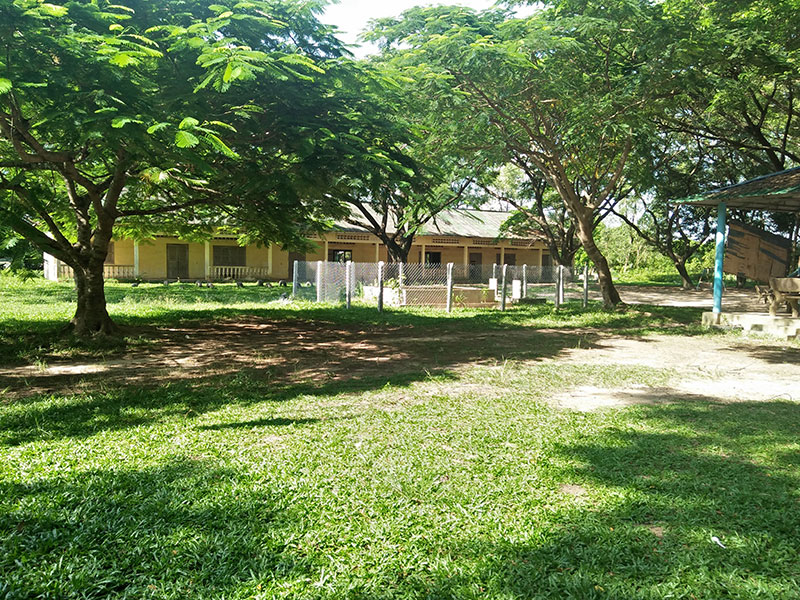
School environment looked clean and green during vacation
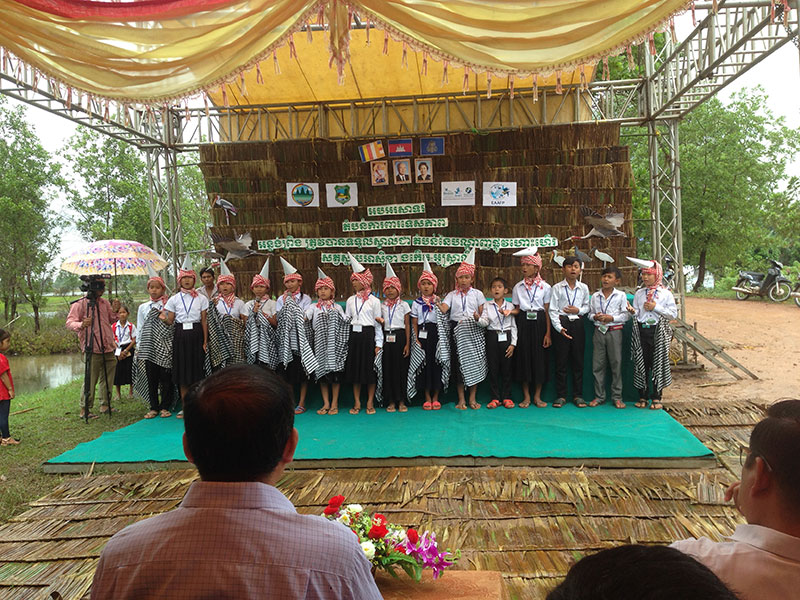
Sarus Crane Protection Drama at AP center
■Update of Environment Education Material
We facilitated the target school to keep the printed environmental education materials during the school vacation and encouraged the trained teachers to produce new teaching aids and to replace old ones with them for the coming school year.
■Eco-school Establishment
We have been working in implementing eco-school activities including constructing bio-garden, planting trees, equipping classroom facilities. As a result, targeted students have got new knowledge about the integrated farming system (e.g. fishery and cropping in Trapain Chhuk Junior Secondary school) and biodiversity conservation from AP Landscape Protection. The school campus kept clean and green during school vacations, which showed a positive change in students’ behavior in waste management at school. Besides, the schools supported by Birdlife-Cambodia have created Sarus Crane conservation drama. Also, students in Koh Tromuong primary schools have enjoyed planting trees.
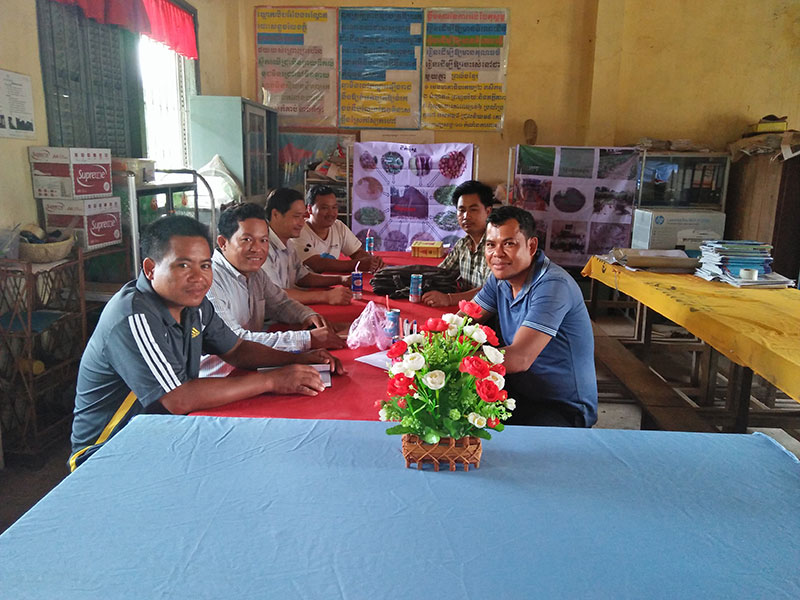
Organized reflection meeting to share ideas for preparing
the raining schedule for next school year 2019-2020
■Environmental Education Program
The trained teachers delivered environment training sessions with four levels (lesson 1 to lesson 4) to primary and junior high school students. Meanwhile, we kept renovating the environment training and discussed to share ideas for preparing the environmental training schedule for the next school year 2019-2020.
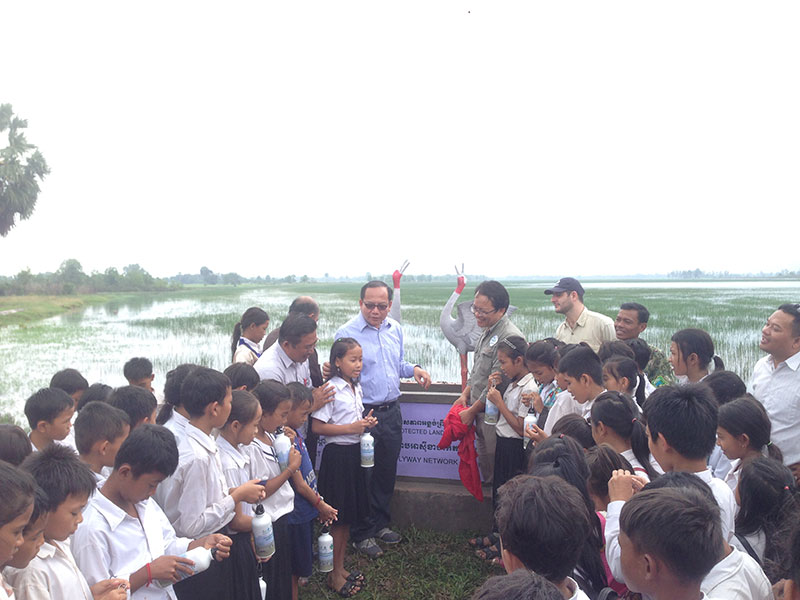
Student learned the Sarus Crane and environment protection
at AP Landscap Protection
In the coming school year 2019-2020 (start from Nov 1, 2019), we are going to 1) conduct meetings to promote utilization of environmental education materials; 2) facilitate the target schools to implement Eco-school activities; and 3) motivate the trained teachers to provide training on environment and study tours ahead to AP Landscape Protection.
